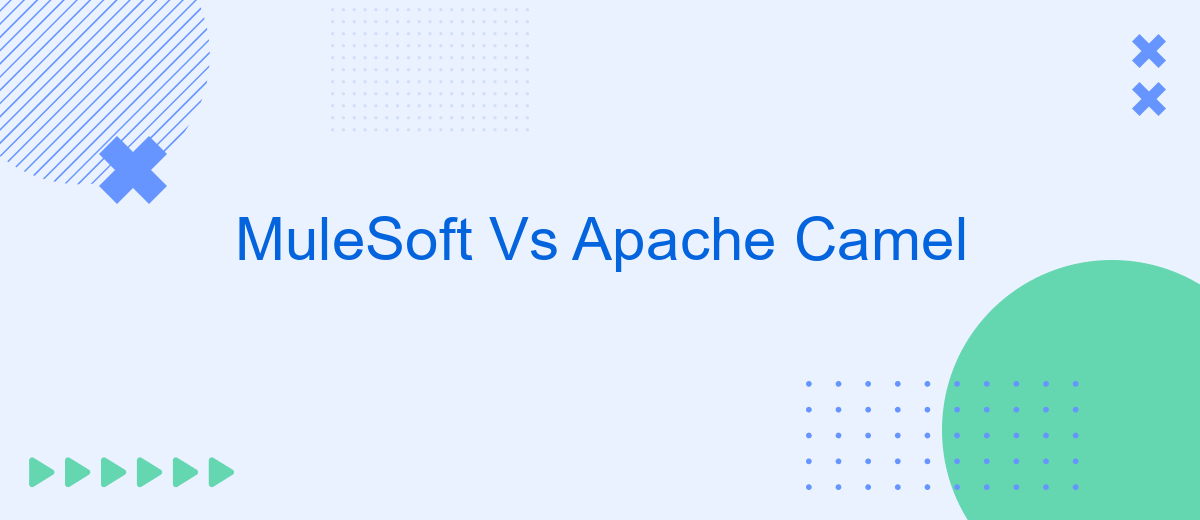In the ever-evolving landscape of enterprise integration, choosing the right tool can make all the difference. MuleSoft and Apache Camel are two leading solutions, each offering unique features and capabilities. This article delves into a comparative analysis of MuleSoft and Apache Camel, exploring their strengths, weaknesses, and suitability for various business needs.
Introduction
In the ever-evolving landscape of enterprise integration, selecting the right tool for connecting disparate systems is crucial. MuleSoft and Apache Camel are two prominent choices that offer robust solutions for integration challenges. While both platforms aim to streamline business processes, they differ in various aspects such as architecture, ease of use, and scalability.
- MuleSoft: Known for its comprehensive Anypoint Platform, MuleSoft offers a wide range of tools for API management, design, and deployment.
- Apache Camel: An open-source integration framework that focuses on routing and mediation rules, providing a lightweight solution for integration needs.
- SaveMyLeads: A service that simplifies the integration process by automating data transfer between various applications, enhancing productivity and efficiency.
Understanding the strengths and limitations of MuleSoft and Apache Camel can help organizations make informed decisions. Whether you are looking for a full-fledged integration platform like MuleSoft or a flexible framework like Apache Camel, evaluating your specific needs and use cases is essential. Additionally, services like SaveMyLeads can further streamline your integration efforts by automating routine tasks, thus saving time and resources.
Architecture

MuleSoft's architecture is based on the Anypoint Platform, which offers a unified solution for API design, development, and management. It leverages a modular approach with components like Anypoint Studio for design and development, Anypoint Exchange for sharing assets, and Anypoint Management Center for monitoring and governance. This architecture enables seamless integration across various systems, both on-premises and in the cloud, ensuring scalability and flexibility for diverse integration needs.
Apache Camel, on the other hand, follows a lightweight, open-source framework approach. It utilizes Enterprise Integration Patterns (EIPs) to facilitate the creation of integration routes using a domain-specific language (DSL). Camel's architecture is highly extensible, allowing developers to integrate a wide range of protocols and technologies. Tools like SaveMyLeads can complement Camel by providing pre-built connectors and automation capabilities, streamlining the configuration and management of integrations, and enhancing overall efficiency and productivity in handling complex integration scenarios.
Features and Functionality

When comparing MuleSoft and Apache Camel, both platforms offer robust features and functionalities for integrating various systems and applications. MuleSoft is known for its user-friendly interface and pre-built connectors, which simplify the integration process. Apache Camel, on the other hand, provides a powerful routing and mediation engine that supports a wide range of protocols and data formats.
- MuleSoft offers an extensive library of connectors for popular services and applications, enabling seamless integrations.
- Apache Camel supports Enterprise Integration Patterns (EIPs), making it highly flexible for complex integration scenarios.
- SaveMyLeads can be used with both MuleSoft and Apache Camel to automate lead data transfers and streamline marketing processes.
- MuleSoft provides a comprehensive API management solution, allowing for efficient API creation, deployment, and monitoring.
- Apache Camel excels in lightweight and modular integration, making it suitable for microservices architectures.
Ultimately, the choice between MuleSoft and Apache Camel depends on the specific needs and preferences of the organization. MuleSoft is ideal for those seeking an all-in-one integration platform with extensive support and resources, while Apache Camel is favored by developers who require a flexible and lightweight solution for custom integration projects.
Comparison and Analysis

When comparing MuleSoft and Apache Camel, it's essential to consider their core functionalities and use cases. MuleSoft is a comprehensive integration platform that offers a wide range of tools for API management, data integration, and analytics. On the other hand, Apache Camel is an open-source integration framework that primarily focuses on routing and mediation rules, making it suitable for lightweight integration solutions.
One of the key differences lies in their approach to integration. MuleSoft provides a user-friendly interface and pre-built connectors, making it easier for non-developers to create and manage integrations. In contrast, Apache Camel requires a deeper understanding of coding and is more suited for developers who need a flexible and customizable solution.
- MuleSoft offers extensive support and documentation.
- Apache Camel is highly flexible and customizable.
- MuleSoft includes built-in analytics and monitoring tools.
- Apache Camel supports a wide range of protocols and data formats.
For businesses seeking a balance between ease of use and powerful capabilities, MuleSoft is often the preferred choice. However, for those who require a more tailored and developer-centric approach, Apache Camel proves to be a robust option. Additionally, services like SaveMyLeads can further simplify the integration process, offering automated solutions to connect various applications seamlessly.
Conclusion
In conclusion, both MuleSoft and Apache Camel offer robust solutions for enterprise integration, each with its unique strengths. MuleSoft excels in providing a comprehensive suite of tools that simplify the integration process, making it an excellent choice for organizations looking for an all-in-one platform. Its user-friendly interface and extensive support make it accessible even for those who may not have deep technical expertise. On the other hand, Apache Camel is highly flexible and powerful, particularly for developers who prefer a more hands-on approach to integration. Its open-source nature allows for extensive customization and scalability, which can be a significant advantage for tech-savvy teams.
When choosing between MuleSoft and Apache Camel, it's essential to consider the specific needs of your organization. For businesses that require quick and efficient integration solutions, services like SaveMyLeads can be invaluable. SaveMyLeads offers automated integration setups that can save time and reduce the complexity of connecting various systems. Ultimately, the choice between MuleSoft and Apache Camel will depend on your team's expertise, budget, and the specific requirements of your integration projects.


FAQ
What are the primary differences between MuleSoft and Apache Camel?
Which one is better for small to medium-sized businesses?
Can MuleSoft and Apache Camel be used together?
How do MuleSoft and Apache Camel handle scalability?
Are there any tools or services that can help with implementing MuleSoft or Apache Camel?
What do you do with the data you get from Facebook lead forms? Do you send them to the manager, add them to mailing services, transfer them to the CRM system, use them to implement feedback? Automate all of these processes with the SaveMyLeads online connector. Create integrations so that new Facebook leads are automatically transferred to instant messengers, mailing services, task managers and other tools. Save yourself and your company's employees from routine work.
